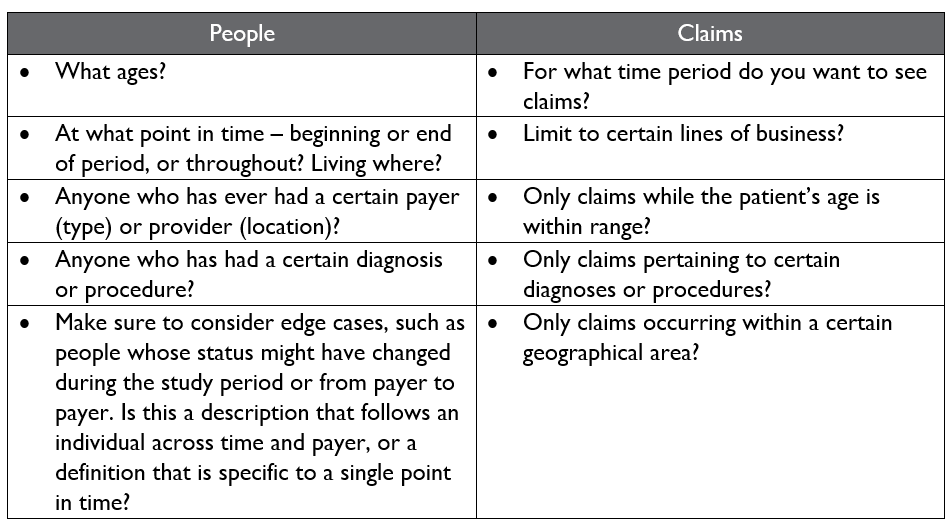Once someone has decided to use a non-public data set from the Colorado All Payer Claims Database (CO APCD), it is crucial that they request the right information to answer their questions. While that sounds like a relatively straight-forward determination, in many cases it is not. The Data Element Request Form, which requestors use to choose the pieces of information for their analysis, contains over 450 separate items to select from, plus different ways to filter the data and special groupers that organize the claims based on specific criteria.
In addition, a requestor must consider whether the data they need contains protected health information (PHI), which requires adherence to HIPAA criteria for release and the minimum necessary rule stating they can only receive the smallest amount of data necessary to complete the analysis. While CIVHC Health Data Solutions Consultants and Analysts help each requestor through the application process, carefully thinking through the completion of the Data Element Request Form can save requestors incredible amounts of time and help ensure the data they receive will answer their questions.
The Elements
The main tab of the Data Element Request workbook contains a large table of data elements that requestors can choose to include in their release. It is loosely based on how information is submitted to the CO APCD under the Data Submission Guide (DSG), breaking down the smaller parts of a claim from left to right.

The far-right columns indicate how each of these data elements are displayed in the CO APCD and how many characters the fields contain. The data elements themselves are defined in columns to the left, followed by their code in the DSG (if applicable) and the PHI security level of the element – or what type of release it falls under: de-identified, limited, or fully-identified.

CIVHC makes suggestions about elements that may be helpful for the desired analysis and requestors indicate their final selections on the page. The Instructions and Standards tab in the workbook provides additional information about some of the data elements and the nature of the claim fields.
Groupers and Filters
Requestors can choose to use groupers and/or filters to enhance and streamline their analysis by making their selections on the labeled tabs in the workbook. The groupers make it easier to gather claims with specific diagnoses or services into a single data set while the filters can further pinpoint certain sections of the data and eliminate others. The filter option allows for a more nuanced slice of CO APCD data and can also require additional considerations as outlined on the Instructions and Standards tab. To filter effectively, it can be valuable to ask specific questions about what lens(es) will be used for analysis.

Non-public CO APCD data is an incredible resource for Change Agents working to improve lives across the state. As the steward of the CO APCD, CIVHC is continually improving the magnitude of what the CO APCD contains, and expanding ways the data can be used and applied to make decisions that will ultimately improve health and health equity, lower cost.
We welcome the opportunity to work with you to determine if the CO APCD can help support your work. Please contact us at ColoradoAPCD@civhc.org to get connected.
